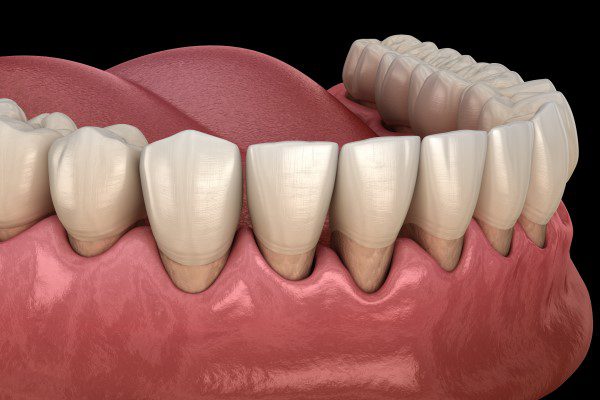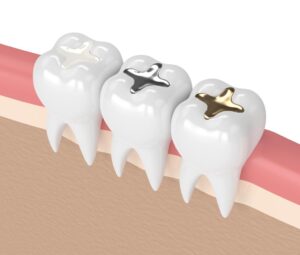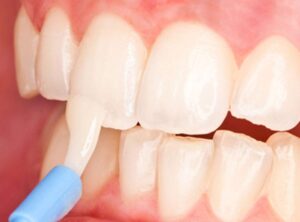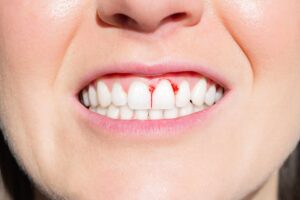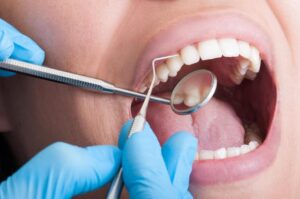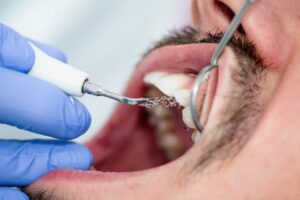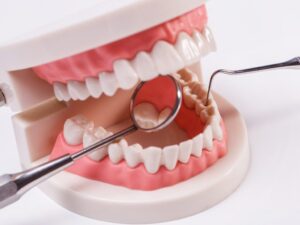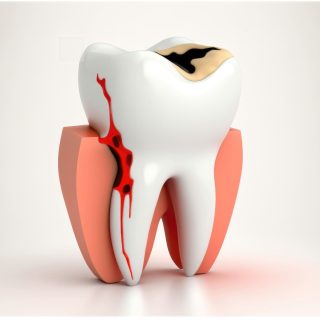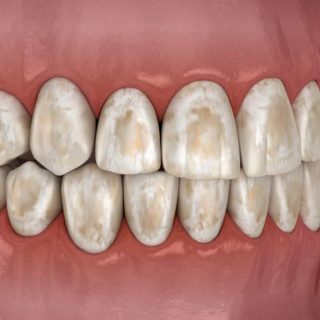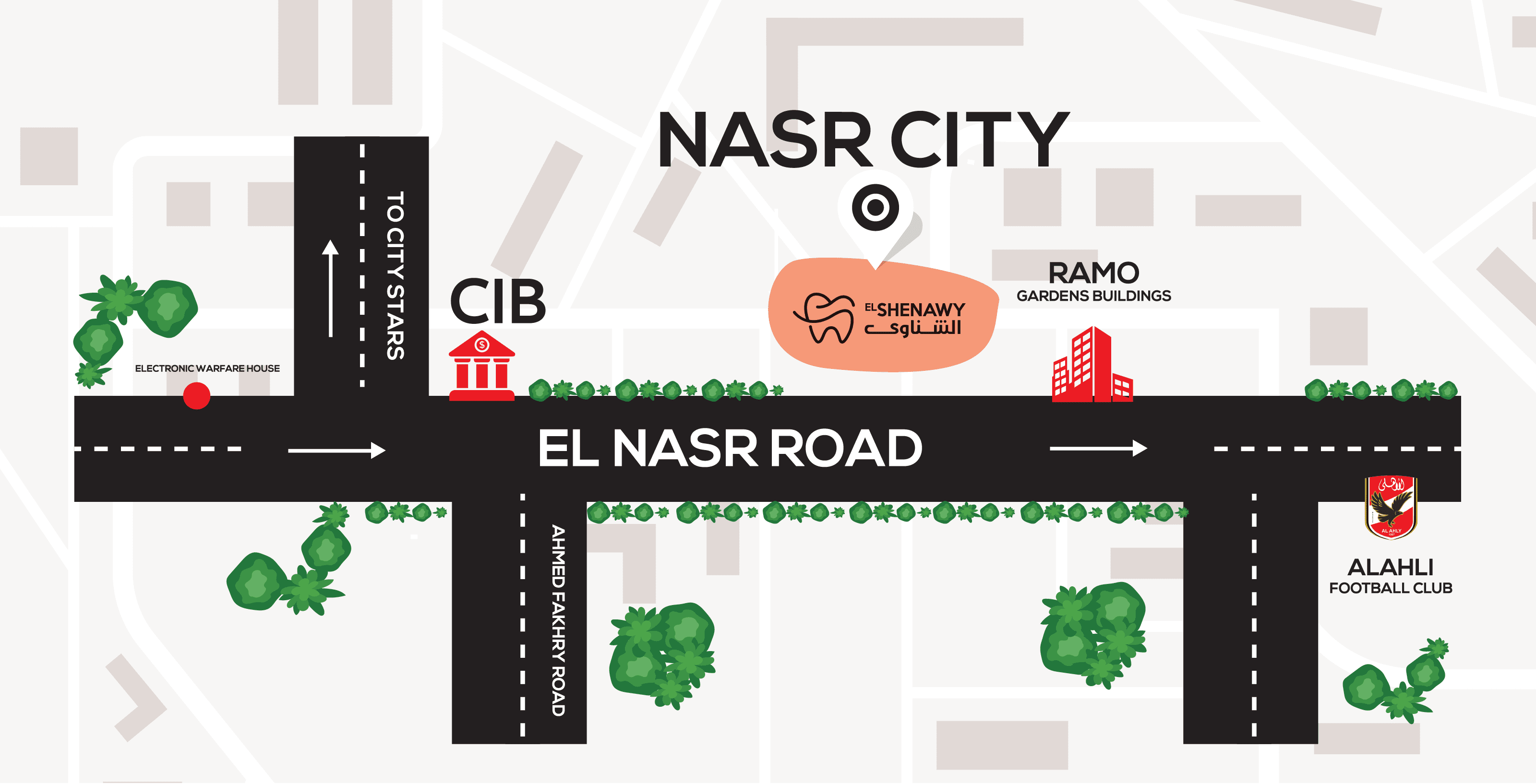Scaling and root planing of teeth are widely recognized as the best non-surgical options for tackling chronic gum disease. These two connected procedures go beyond just regular teeth cleaning. They get rid of plaque and tartar build-ups deep under the gum area that regular cleanings can’t access. By focusing on these hard-to-reach pockets, deep cleaning helps to get rid of harmful bacteria, reduce inflammation, and promote healing of the gums. This thorough method is key to stopping further damage to your teeth, gums, and the bones that support them, ultimately helping to preserve your oral health and prevent tooth loss.
Defining Scaling and Root Planing of Teeth
Scaling and root planing are connected, yet distinct. Scaling is a medical term for a thorough dental cleaning, specifically the removal of plaque and tartar from the tooth surface, especially around the gum line and sometimes below it. This process is usually conducted with root planing as well.
On the other hand, root planing goes a step further. After scaling, dental planing smooths out the surface of the tooth root itself beneath the gum line. This smoothing helps the gums reattach better to the teeth and reduces places where bacteria can hide.
But do you really need this procedure? Let’s find out
Cases the require deep dental cleaning
Dentists tend to recommend deep cleaning for teeth for patients who have signs of chronic periodontal disease (gum disease). Scaling and root planing can be helpful to beat and prevent the harmful effects of this condition and maintain your oral health.
Chronic gum disease mainly happens because the bacteria in plaque pulls your gums away from your teeth. Accordingly, this leads to the growth of large pockets between your teeth and gums. And with time, the bacterial growth increases, making it even hard for you to reach with regular at-home teeth brushing.
This is the reason why all dentists emphasise the importance of flossing along with brushing to target these hard-to-reach spots.
Keep in mind that if gum disease is left untreated, it can lead to various complications, including:
- bone and tissue loss
- tooth loss
- loose teeth
- moving teeth
Benefits of scaling & root planing treatment
Research has shown that this deep cleaning method can decrease the gaps between teeth and gums by approximately 0.5 millimeters, thereby reducing the chances of tooth, bone, and tissue loss.
This in turn can also help in:
- Preventing bad breath: By getting rid of the oral bacterial film that causes halitosis.
- Enhancing your overall health: A deep dental cleaning reduces harmful bacteria from reaching the whole body through your bloodstream, improving your general health.
- Reducing the risk of developing advanced symptoms: Treating your gum disease earlier will reduce any chance of more bacterial growth that causes severe inflammation, gum recession, bone loss, and ultimately tooth loss
The deep dental cleaning process: step-by-step guide
Dentists need approximately 1 to 2 hours to perform the process. During this time, your dentist will:
- Numb your gums using local anesthesia.
- This procedure is known as scaling, and it entails clearing away tartar and plaque both above and below your gum line.
- Afterward, the dentist smooths out your tooth roots. This is achieved through root planing.
Dentists typically use either hand-held instruments or special ultrasonic tools for the root planing. They may also apply antibiotics directly around the tooth roots or prescribe oral antibiotics to support healing after the procedure.
Depending on your condition, your dentist may complete the treatment in a single visit or divide it into two appointments, cleaning one half of your mouth at a time.
If you’re considering having a root planing procedure, you might need to check out the dental anesthesia price at El-Shenawy dental centres to learn more about the costs involved.
Post-root planing care: essential tips for healing
It’s totally normal to feel a little bit uncomfortable after this procedure. Pain may last for 1–2 days, while tooth sensitivity can continue for up to a week. You may also experience some swelling, tenderness, bleeding near your gums.
Helpful Tips for Healing:
- Take prescribed medications: Use any antibiotics or medicated rinses as directed to prevent infection and support healing.
- Attend your follow-up visit: Your dentist will evaluate your gum health and measure pocket depth. If the pockets haven’t improved or have deepened, additional treatment may be required.
- Practice excellent oral hygiene:
- Brush twice daily with a soft-bristled toothbrush
- Stick to daily dental flossing to reach areas between your teeth.
- Eat a balanced, nutritious diet to support overall oral health
Consistent care is key to recovery and preventing the return of gum disease.
Not sure if you need a dentist? Here Are the Signs
If you experience symptoms like non-stop bleeding, severe pain that doesn’t go away with medicines, increased sensitivity, or excessive swelling, these are clear signs that you may need scaling and root planing of teeth. It’s important to visit a dentist promptly in such cases.
Early detection and treatment is crucial for preventing development of more severe problems. At El-Shenawy Dental Clinics, our skilled team uses modern technology and gentle methods to offer personalized care designed specifically for your needs. From routine checkups to advanced treatments, we’re here to help you maintain a healthy and confident smile.
Be one of over 30,000 satisfied clients. Book your appointment today.
Frequently asked questions
- How often will I need root planing and scaling?
Ideally, scaling and root planing is a one-time treatment.Once the procedure is done, maintaining a consistent and effective oral hygiene routine should prevent the need for it to be repeated.
- How much time does it take to feel normal after a dental cleaning?
Recovery after this procedure is quick and most people return to their normal routine the same day.
- Is it safe to get a deep dental cleaning?
The procedure is usually safe. You might experience some mild sensitivity, tenderness or bleeding but these are all normal side effects and typically subside within a few days as your gums heal.



